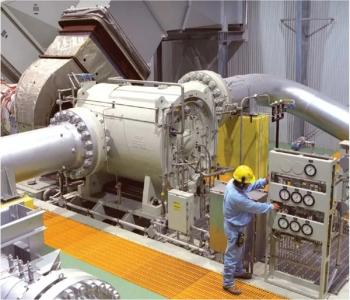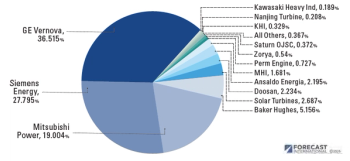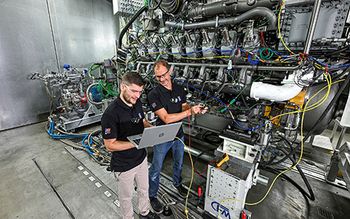
- May/June 2023
- Volume 64
- Issue 3
How Settle-Out Pressure Impacts Compressors
SOP is an important parameter in centrifugal compressor design.
When selecting a centrifugal compressor for a project, settle-out pressure (SOP) defines two major requirements: driver torque for startup at SOP and compressor shaft-sealing pressure. But first, what is SOP?
In gas compression, pressurized and unpressurized are the two major scenarios associated with compressor shutdown.
An unpressurized compressor shutdown is usually triggered by severe events in the plant—the extreme being a loss of containment and possibly a fire when the gas within the compressor’s isolatable section is vented to a pressure lower than the compressor discharge pressure. However, venting the gas, which results in flaring or safe release to the atmosphere, causes environmental impacts and revenue loss (due to refrigerant or feedstock loss) and therefore is not preferred unless necessary. For this reason, pressurized shutdown is more common and preferred over unpressurized shutdown whenever allowed by safe design.
In a pressurized shutdown, the isolatable section is kept pressurized for restart, which results in pressure equalization across the compressor to SOP. This SOP is usually higher than the design inlet pressure and can reach values higher than the discharge pressure of lower or intermediate pressure sections, for example, of refrigeration compressors in LNG plants. FIGURE 1 is a conceptual schematic depicting SOP and its overly simplified calculation without considering the impact of temperatures.
Let’s discuss why this SOP under unpressurized shutdown affects the above stated two requirements.
DRIVER START-UP TORQUE
Compressor absorbed torque can be considerable if restarted under high SOP. Compressors are typically started with the inlet and discharge isolation valves closed and the recycle (surge control) valve fully open. In the design stage, one of the compressor driver requirements is to meet power and torque requirements under all operating conditions—start-up, including restart at SOP, and normal running. API 617 requires motor driver’s power to be 10% higher than the compressor’s maximum absorbed power for any specified operating case. In some applications, plant operators usually specify to size the motor to deliver the required torque at reduced voltage (80%).
Do note, the starting torque discussed here is not the locked-rotor torque, but the torque required to accelerate the driven equipment from zero to its rated speed.
At restart, if the SOP is considerably higher than the design inlet pressure, the gas density and hence mass flow rate with full recycle through compressor are also high, requiring consider-ably high absorbed torque as in the equation below:
This is especially a concern as driver-produced torque is lower at reduced speeds. As the driver speed increases, it can pick up more load.
When plotted on a compressor map, these high-mass flow rates will show that the compressor runs in overload conditions that require high starting torque. In some cases, the driver torque may fall short of meeting the compressor-absorbed torque, which would impose reducing the SOP. Therefore, restart from SOP becomes an important design criterion while selecting the driver.
If the starting torque at settle-out condition is causing oversizing of the driver, or if the driver is already selected and the project is in the advanced stage of engineering, alternative start-up procedures, including release/venting the SOP, change in recycle valve controls, throttling the inlet flow (if possible) etc., may be considered.
COMPRESSOR SEALING PRESSURE
Dry gas sealing pressure is maintained at least 50 psi higher than the process side gas pressure (in beam-type compressors) and impeller back pressure (in overhung compressors). A standard check (also required by API 617) mandates that the available sealing pressure should consider the SOP. The primary sealing gas source is typically taken from the compressor’s discharge with a provision of a high-pressure clean gas for startup (when the compressor discharge is not available). The maximum shaft-sealing pressure and its source should thus be selected to account for the effect of SOP.
For these reasons, the SOP becomes an important parameter in a centrifugal compressor design project.
Sudhindra Tiwari works in Bechtel Energy’s Houston office and has more than 30 years of experience in rotating/package equipment engineering. Email Sudhindra at stiwari2@Bechtel.com.
Articles in this issue
over 2 years ago
Myth: The End is Near … I Have Rotordynamic Cross-Coupled Forcesover 2 years ago
Maximizing Hole Measuring with Bore Gagesover 2 years ago
Ushering in the Next Generation of Compressor Lube Oil Systemsover 2 years ago
The ‘Green New Era’ for Turbomachinery?over 2 years ago
WTUI 2023 Show Report: Innovation and TechnologiesNewsletter
Power your knowledge with the latest in turbine technology, engineering advances, and energy solutions—subscribe to Turbomachinery International today.





